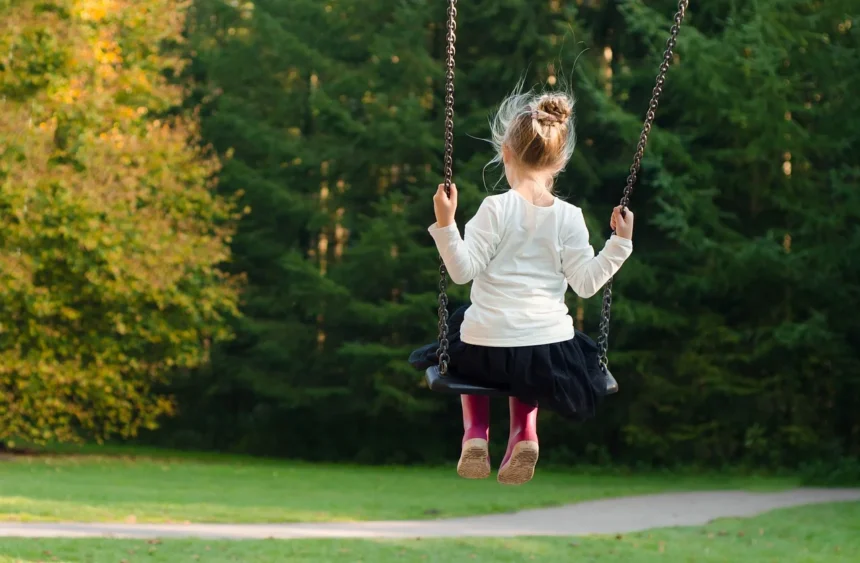Swinging is not only a pastime we all remember from the playground, but also something that can play a role in the development and health of children with autism; one that influences outcomes. While swinging is undeniably fun, for many on the spectrum, it can also be therapeutic, calming and developmental. In this article, we look at the link between autism and swinging and how it can be an integral part of the lives of children with autism. In this article, we will cover the types of swings available to us, the benefits they can provide and how swing therapy or swinging can be incorporated into more naturalistic environments to benefit children with autism.
Understanding Autism and Sensory Processing
Autism spectrum disorder (ASD) is a neurodevelopmental disorder characterized by difficulties in communication, social interaction and repetitive behavior. Sensory Processing Differences A core feature of autism is sensory processing differences in which individuals are super or less sensitive to external environmental stimuli. This makes some kids with autism feel over-stimulated by the world, but others seek a lot of intense sensory experience in order to feel comfortable.
Since swinging is a slightly different type of vestibular input, the help to regulate sensory processing is unique. That rhythmic movement can fill any needs of calming from the child on the spectrum, or they could be needing activity, to find a therapeutic balanced state.Understanding this connection between autism and swinging allows us to see how this activity can be both fun and beneficial.
The Science Behind Swinging: How It Benefits Autistic Children
Something as simple as swinging is stimulating to the vestibular system the area in our inner ear used for balance, spatial awareness, and motor coordination. This positioning in space is really enhanced through stimulation of movement of the vestibular system, which occurs when children swing. For autistic kids, that can translate into all sorts of positive changes:
1. Regulation of the Vestibular System
Motor coordination and awareness of space can often be difficult for kids with autism. They might to be more precise, uncoordinated, clumsy, and have trouble with common activities of daily living that involve a sophisticated or complex pattern of movement. It regulates the vestibular system, which is highly important because it is responsible for balance and motor coordination omething we all need to function even with the simplest of tasks.
- The vestibular system gets regulated through swinging, resulting in less clumsiness and better general motor skills. These benefits will all compound into greater confidence and with it, further participation in athletic activities.
2. Calming Effects
Calming Effect This is perhaps the biggest advantage of swinging for children with autism. The motion of a swing gives constant sensory stimulation which is great for calming anxiety and sensory overload. But swinging can be a valuable support for self-regulation in children who reach their overstimulation threshold and struggle to deal with the world around them.
- The soothing of swinging acts like a “sensory reset” that can help decrease meltdowns and unwanted disruptive behaviors. The predictability within the movement is calming, which is helpful during the providing of swinging as an activity for children who like predictability in their routines.
3. Improved Focus and Attention
Organized sensory input from swinging will facilitate organization of the brain, sharpening focus and increasing concentration. The benefit often continues beyond the swinging session itself and can help the autistic child to more appropriately engage in tasks and activities for the remainder of the day.
- When children swing, their brain can become “uncluttered,” concentration develops, and the processing of information gets better. This indeed may make a difference in a child’s learning, engagement, and productivity.
4. Muscle Development and Tone
It also physically is beneficial in many ways: swinging works the muscles of the core, legs, and arms, developing strength and, hence, better muscle tone, which is of paramount importance for children with autism who might have hypotonia.
- Regular swinging is important for posture, coordination, and development in general, which is important for the building of strength and confidence.
5. Enhanced Social Skills
While sometimes a solitary pursuit, swinging frequently occurs in public spaces, like the playground or group therapy sessions. By offering opportunities for autistic children, these shared experiences provide contexts within which peers are engaged in learning more about turn taking, sharing and personal space.
- Swinging dates can connect communication and patience in a way to make it easier to socialize as well as get connected with other people. Play together or share a turn on a swing and that forms the building blocks of future social skills.
Types of Sensory Swings: Tailoring the Experience
This is where swinging comes in and not all swings are created equal when it comes to kids on the autism spectrum so choosing wisely can make a world of difference. Childrens sensory swings are specifically designed to provide the right amount of calming or stimulating sensation based on the kids individual needs. Below are some of the most popular types of sensory swings and what each offer:
1. Pod or Cocoon Swings
Cocoon swings, or pod swings wrap around the child to offer a soothing and calm space. The swings are great for children who are overstimulated with their environment and need to retreat somewhere safe.
- A pod swing provides a sense of security and thus reducing anxiety, along with calming sensory input. These swings are almost like a warm hug around your child, which provides proprioceptive input!
2. Platform Swings
These are flat, versatile platforms that children can sit on, stand to swing or even lie down. They are great for promoting balance and coordination skills since they assist the kid in shifting their body to remain balanced.
- They encourage balance and coordination perfect for kids who may require physical support to develop their core stability and awareness of space in a fun way.
3. Hammock Swings
A hammock swing is soft fabric that hugs the body, evenly distributing gentle pressure along the way. This swing provides proprioceptive input, which is great for kids who crave deep pressure (like a nice tight hug).
- The full-body support and gentle motion of hammock swings make them ideal for relaxation, as they soothe the nervous system.
4. Rotational Swings
These swings rotate and do so in a circular manner, offering lots of vestibular input. These swings are great for those that crave movement-based sensory input, they also provides additional sensory input through rotation.
Benefits of Sensory Swings at Home and in the Classroom
The integration of sensory swings within home and educational settings can be greatly beneficial for autistic children in several ways. Whether used for their sensory breaks, regulating themselves, or for simple enjoyment, the potential positive effect of swings is enormous.
1. Accessible Therapy at Home
Having a sensory swing in the house increases the accessibility of therapeutic sensory input at any time it may be required. The accessibility allows children to perform regulation more appropriately, and this reduced anxiety empowers them to cope with the daily-life challenges.
- An at-home swing enables children to use their tools provided for managing stress and sensory needs independently.
2. Encourages Play and Physical Activity
An at-home swing enables children to use their tools provided for managing stress and sensory needs independently.
Swinging is one of the entertaining ways to advance physical activity, which is critical for the overall health and welfare of all children, including those on the autism spectrum. Regular movements help improve physical fitness, motor skills, and cardiovascular health.
- Swings provide an active, entertaining manner of exercising, where children can enjoy physical activity rather than perceive it as work.
3. Builds Independence
Working on using a swing alone is an independent activity for children with autism. This teaches them about their own sensory needs and gives them the power to act on it without having to rely solely upon adults.
- Not only does swinging promote independence, allowing children to learn about their sensory likes and dislikes and help manage them themselves — an important step in self-regulation.
4. Facilitates Learning in the Classroom
The regulation of their sensory input is paramount in social situations to mitigate anxiety and promote increased likelihood of positive interactions. This can help children to feel more comfortable and confident in social situations, by minimising sensory overload.
- ensory swings promote social interaction, whether it be through parallel play or group swinging even one-on-one swinging provides positive opportunities for engagement with friends.
Swinging: A Simple Yet Powerful Tool for Autistic Individuals
The regulation of their sensory input is paramount in social situations to mitigate anxiety and promote increased likelihood of positive interactions. This can help children to feel more comfortable and confident in social situations, by minimising sensory overload.

